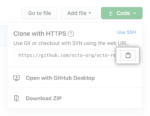Serena wants to be the modern alternative to Git and Subversion. The company just announced the latest version of Dimensions CM, its software change and configuration management tool, with features developers won’t find from open-source vendors like Git and Subversion, said the company.
The release of Dimensions CM 14 focuses on solving complex distributed parallel development, poor code review and inspection, lack of health and quality indicators, and poor visibility from geographically distributed teams.
“We’ve innovated Dimensions CM to enable development teams to visualize the health and quality of the changes they are making to the code so they can increase their software velocity and show the quality of what they are delivering,” said Ashley Owen, director of product marketing at Serena Software.
One of the major features Dimensions CM 14 now provides is change and branch visualization. The visualization gives developers real-time visibility into the health and quality of their code. According to Owen, developers don’t get a visual display of all development activities across the development team in Git or Subversion unless they build it.
(Related: Git 2.0.0 is released)
“Sure there is branch visualization, but there isn’t a great deal of change and branch visualization,” Owen said. “We believe understanding the change, the health of the change in terms of the branch and merge concepts can significantly minimize conflicts, reduce reworks and increase velocity.”
To address poor peer review, the release features configurable integrated peer review, which provides collaborative Web-based peer review and shows full audit trails to improve code quality, team collaboration and change tracing.
“Think of it as codifying pair programming,” Owen said. “We capture the review in a Web interface that’s very simple, very easy and very accessible within the developer’s IDE.”
Dimensions CM 14 also provides enterprise global scalability and security, and the performance of Git as a remote site through a local library cache. The cache removes network transfers to speed up file access for distributed teams.
“We’re not a DVCS, but we are providing the performance of a DVCS through the local library cache,” Owen said. “What that means to development teams is a single visual display of all the development that is going on, the deliveries that are happening, the status of the CI build, and the status of the peer reviews.”
Other features include native integration support for Appcelerator’s mobile development platform, Apple’s Xcode, extended Safari support to include Mac OS X clients, CI integration, and built-in Araxis file merge.






